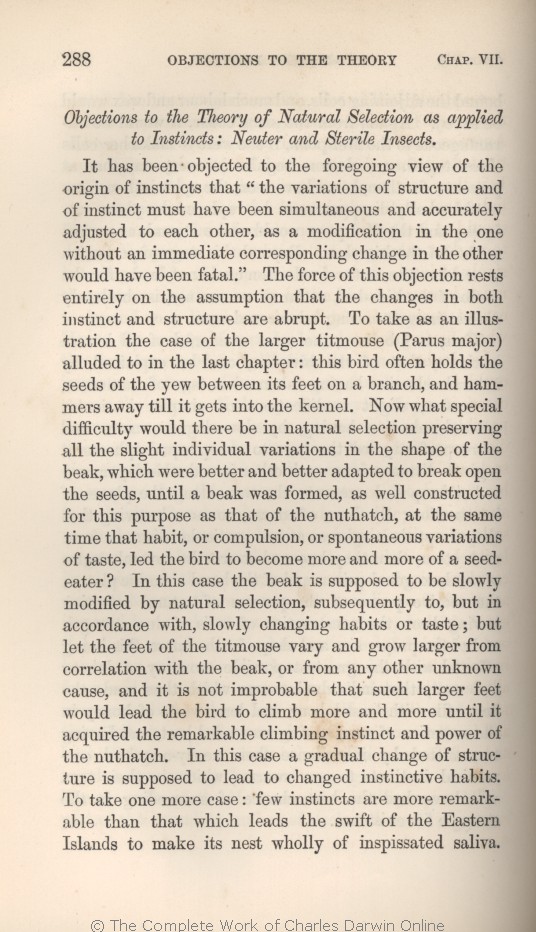Objections
to
the
Theory
of
Natural
Selection
as
applied
to
Instincts:
Neuter
and
Sterile
Insects
. |
Insects
. 1866 1869 | |
Insects
. 1872 |
|
It has been objected to the foregoing view
of
the origin of
instincts | instincts 1866 1869 1872 | | instinct 1861 |
| rests 1869 1872 | | seems 1861 1866 |
| ..... 1869 1872 | | to rest 1861 1866 |
| both 1861 1866 1869 | | the 1872 |
| instinct 1861 1866 1869 | | instincts 1872 |
| the last 1861 1866 1869 | | a previous 1872 |
| away 1861 1866 1869 |
| with its beak 1872 |
| into 1861 1866 1869 | | at 1872 |
| all the slight individual variations in the shape of the beak, which were 1869 1872 |
| each slight variation of beak, 1861 1866 |
| the seeds, 1869 1872 | | seeds, 1861 1866 |
| ..... 1869 1872 | | hereditary 1861 1866 |
| compulsion, 1869 1872 | | compulsion 1861 1866 |
| or spontaneous 1869 1872 |
| from the want of other food, or the preservation of chance 1861 1866 |
| led 1869 1872 | | made 1861 1866 |
| to become more 1869 1872 |
| more 1861 1866 |
| habits 1869 1872 | | habit; 1861 1866 |
| or taste; but 1869 1872 |
| but 1861 1866 |
| ..... 1869 1872 | | is 1861 1866 |
| is not 1869 1872 | | very 1861 1866 |
| would 1866 1869 1872 | | might 1861 |
| and more 1861 1869 1872 | and more 1866 |
| ..... 1869 1872 | | even 1861 1866 |
| power 1869 1872 | | capacity 1861 1866 |
| nuthatch. 1869 1872 | | nuthatch? 1861 1866 |
| habits. 1866 1869 1872 | | habits 1861 |
| ..... 1866 1869 1872 | | of 1861 |
| ..... 1866 1869 1872 | | life. 1861 |
|









